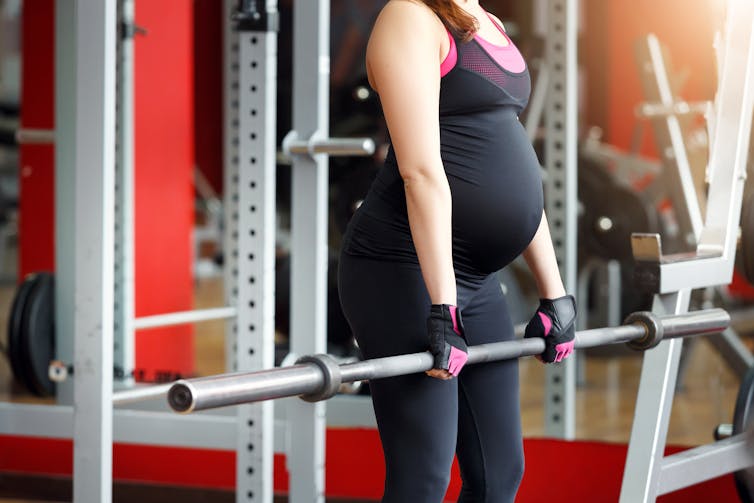
While exercise is often said to be safe to do while pregnant, with so much information out there, it can be hard to figure out just how much exercise you should do – and if there are certain exercises to avoid.
Exercise is good for the mother and her baby, but given all the changes that happen to the body during pregnancy, it is advisable to take it a bit easier when exercising.
One of these changes is how our cardiovascular system functions. Because the baby needs a constant supply of oxygen to develop – and because of how quickly it grows – the mother will experience a 45-50% increase in blood volume to carry this much-needed oxygen to the baby.
The mother’s heart rate also increases to ensure the baby gets enough oxygen. This could put an extra strain on the woman’s heart and lungs when doing any sort of activity.
The respiratory system is also affected. The amount of oxygen a mother can inhale increases by around 40-50% to give the baby the oxygen it needs. This change also happens because the growing baby affects lung function by reducing the space in which the mother’s lungs can inflate. These changes may see the mother experience more shortness of breath – which will make even everyday tasks more demanding.
The body’s joints also relax – partly due to the mother’s centre of mass changing, and because the pelvis has tilted. The way the body fuels itself also changes. When we eat foods, the body stores these byproducts (typically glucose or carbohydrates) in our liver and muscles so that our body can draw upon these stores for energy when needed (such as when we exercise). When pregnant, there is less glucose available to draw on for energy. This is because the baby needs this energy to develop. As a result, the mother might feel more fatigued more quickly when they’re doing any type of task – including exercise.
Keep moving
But all these changes don’t mean you shouldn’t exercise during pregnancy.
Studies show that doing aerobic exercise (such as walking, jogging or swimming) during pregnancy for at least 150 minutes a week can improve fitness, increase muscle tone and strength and reduce weight gain. Exercise may also lower the risk of experiencing back pain, which is a common problem for many pregnant women.
There’s also some limited evidence that following an exercise plan during pregnancy can help some women experience shorter labour – and decrease the likelihood of needing a caesarean section. It’s currently unclear why this link may exist.
Not only is exercise safe for the mother, it’s also safe for the baby. Although exercise can directly affect the baby (such as the baby’s heart rate increasing when the mother exercises), researchers have shown exercise causes no symptoms or signs of stress to the baby. Exercising regularly during pregnancy may also lower the likelihood of the baby being overweight in adulthood.

But though exercise is safe for both mother and baby, some activities may need to be avoided. Somewhat obviously, combat sports or those that may have an increased risk of falling (such as horse riding or mountain biking) should be avoided.
If you enjoy lifting weights, it’s still considered a safe and effective form of exercise to do during pregnancy. But it may be best to lift with a friend or personal trainer and avoid excessive loads, as these increase the risk of muscle and joint injuries.
You should also avoid exercising in hot temperatures (especially those above 32◦C) because of the extra stress this could place on you and your baby’s heart. Something else to consider carefully is any form of exercise that requires the mother to lie flat on her stomach or back – such as during yoga or pilates. The reason for this is there’s an increased chance of hypotension (a rapid drop in blood pressure) that may increase the risk of fainting when standing up.
So while you might need to take it a bit easier if you want to exercise while pregnant (especially during the second and third trimester), this doesn’t mean you need to work out less than you did before. Generally, people are recommended to get at least 150 minutes of cardiovascular exercise a week. The same is true for women who are pregnant, though you may need to lower the intensity you exercise at.
And if you do decide to exercise during pregnancy, it’s important to make sure you’re eating and drinking enough since exercise requires more energy. The more demanding the exercise, the more calories you’ll need to consume afterwards.
The authors do not work for, consult, own shares in or receive funding from any company or organisation that would benefit from this article, and have disclosed no relevant affiliations beyond their academic appointment.
This article was originally published on The Conversation. Read the original article.







